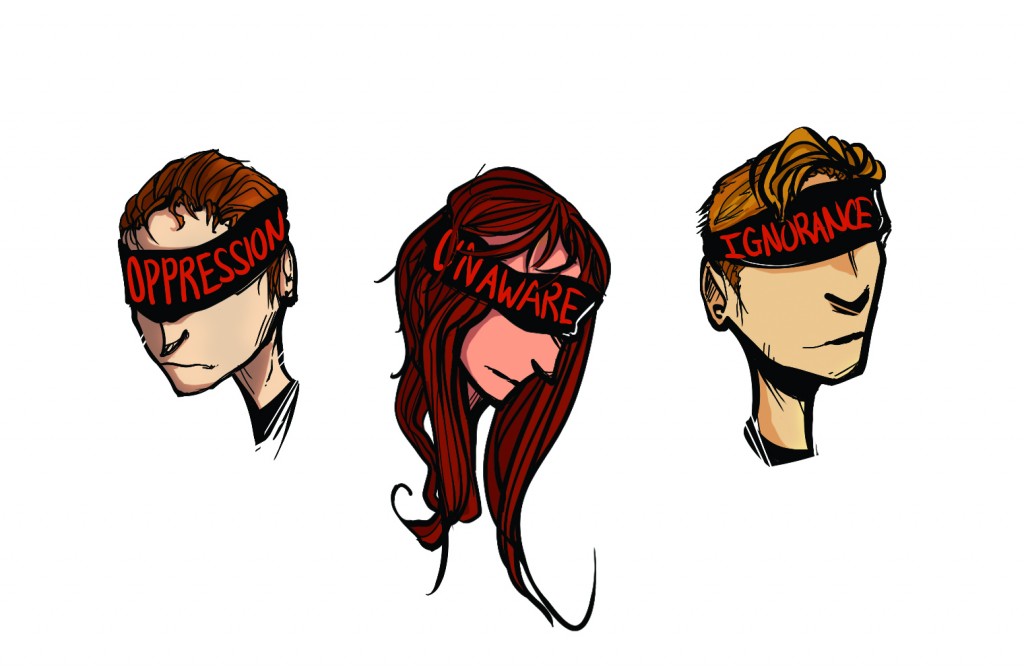[dropcap]W[/dropcap]hen I was in the eighth grade, I read The Giver. The novel was centred around a 12-year-old boy who lived in a society that could only see black and white, devoid of all emotion, passion, and colour. I remember thinking that the world he lived in seemed so cold. They eliminated the concept of colour in the name of equality.
At the time, I thought that kind of ‘colour blind’ mentality only existed in the world of fiction. But shortly after I immigrated to Canada, I discovered that racism in this country is often met with the same oversimplified, cold approach to eliminating systemic discrimination. Unfortunately, race issues are often plagued by ignorance and oppression. Claiming that you don’t see colour or that society shouldn’t see colour only hurts those who have experienced racism firsthand.
‘Colour blindness’ in itself denies those who have faced discrimination the ability to share their stories. When I realized this, that novel I read in high school suddenly seemed much more real than it did before.
Sentiments such as “I don’t see colour” or better yet, “all people are the same to me” are the foundations of this approach. This viewpoint may seem to be about equality on the surface — it is, after all, principled on the idea that we should all be treated the same. However, being colour blind as a response to racism actually negates the diversity of experiences among individuals, and only perpetuates racist ideas.
To put it simply, seeing colour isn’t racist, but seeing one colour as being superior or preferable to another is racist.
Disguised under the premise of fairness, colour blindness only sweeps the issue of racism under the rug.
The colour blindness argument, in a way, distorts the definition of racism. This idea has been elaborated by many, but E.J.R. David, an American journalist and professor at the University of Alaska, sums it up the most eloquently, “pretending or choosing to not see color [sic] will not solve racism; colorblindness will just ignore racism and maintain it.”
Disguised under the premise of fairness, colour blindness only sweeps the issue of racism under the rug, leaving those who are affected by it more frustrated, angry, and oppressed than ever.
At the age of 15, I immigrated to Canada with my family. I was born in the Philippines but spent my entire childhood growing up in Hong Kong. When I first registered for high school here, I was told that I would have to take an English test, since I had moved to Canada from another country. Even though I told the secretary that English was my first language, as I had gone to an international school with a Canadian curriculum in Hong Kong, she still insisted that I had to take the test in compliance with school procedure.
The test had one question that had to be answered in paragraph form. I quickly filled up two pages with my answer and shocked the teacher when I asked her for more paper. And her shock at what I was capable of stuck with me.
As my time spent living in Canada has gone by, I have had many conversations centred around where I lived before Canada, and over the years I have received many comments like, “oh, you moved from Hong Kong? But your English is so good. I thought you had grown up here!” or “you have no accent whatsoever — I had no idea you had moved here from another country!” Making comments about one’s accent, and the lack thereof, is discriminatory.
I watched my parents struggle to find employment. My dad, who had over 30 years of accounting experience, did not have his credentials recognized here because they were obtained in the Philippines. I remember him looking through a catalogue of classes offered by the Burnaby School District for Continuing Studies, and considering whether he should take an “Accent Reduction” course to increase his chances of employment.
We were judged, often incorrectly, based on our immigrant status.
These were a few of the experiences my family lived through. We were judged, often incorrectly, based on our immigrant status. While Canadian society had guidelines in place for newcomers to Canada, these guidelines certainly don’t apply for every immigrant. The disparities in this system were evident even within the experiences of different members of my own family.
Even though Canada prides itself on being an accepting and diverse country, these subtle nudges to assimilate into Western society are very much still there.
My family’s story is only one of many examples of how race is only one aspect of a multitude of life experiences. Even if a group of people come from the same country, they live through different events, have a variety of backgrounds, and have many components to their identity — and while their culture is certainly part of that, it doesn’t tell their whole story.
Instead of being colour blind, we should act as allies to marginalized groups, and give them the opportunity to tell their stories. The issue of race is complex — comprised of the intersections of culture, background, and lived experiences. Colour blindness is nothing but an oversimplified, unproductive approach to racism in Canada. No one is colour blind — we should acknowledge colour and appreciate the diversity it creates.


“Even though Canada prides itself on being an accepting and diverse country, these subtle nudges to assimilate into Western society are very much still there.”
And they should be. In fact, assimilation should be expected and not subtly. Multiculturalism is a failure. There should be no parallel cultures within Canadian culture because that ultimately results in conflict. So remember: Canada doesn’t need your family, your family needs Canada.
Making comments about one’s accent is NOT discriminatory. Stop being a special snowflake!